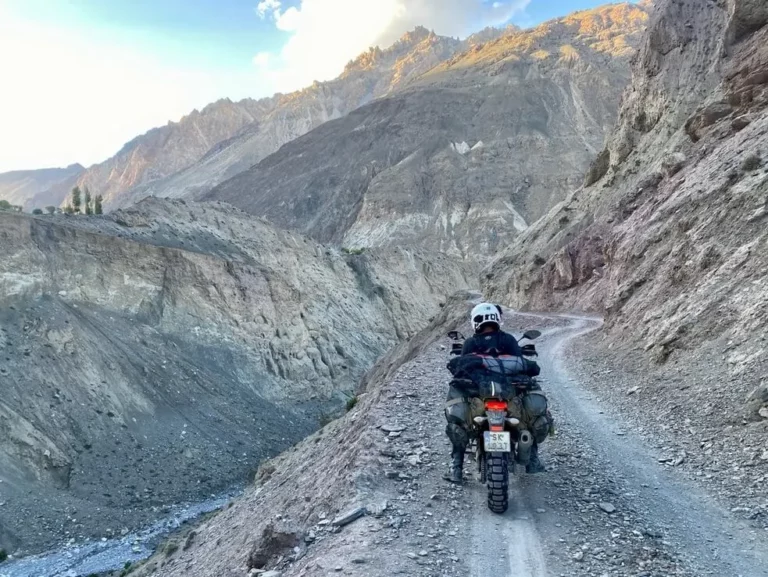Hunza… charismatic it is … We saw it blue and white, beige like capuccino and all in brown lace of foam. Hunza is a river that meanders through the Karakoram Highway canyon and roars loudly when approached close.

On January 4, 2010, one rock trembled, cracked, and in broad daylight the entire slope collapsed. Rock debris blocked the flow of the river. The whole hill fell with a thud and made quite a mess! The area was enveloped in thick brown dust, people rushed out to see what had happened, but no one expected what was to happen in the next 48 hours. In the blink of an eye, the water began to rise in place, forming a lake. First, the village of Aminabad sank, leaving 32 families homeless. The next village of Shishkat was under water. Houses, shops, shoemakers’ workshops and carpenters’ workshops were sinking fast. Water mercilessly flooded crops, took away animals, brought in return fear, concern and helplessness. 170 homes, 120 shops disappeared, 20 people died and 25,000 were cut off. More than 6,000 inhabitants of the surrounding valleys were affected in one way or another. To make matters worse, the road also disappeared under water.


The rock mess cut off the northern villages from any supplies. A week after the incident, the army brought boats so that those “stuck” on the wrong side of the landslide could return home. Karakoram – the north’s only thoroughfare has been severed beyond easy repair.

Out of chaos and catastrophe emerged Lake Attabad – with wonderful turquoise waters. For the whole 5 years, the barge crossing was the only way to transport people and necessities to the villages of Gulmit, Passu, Sost, Shimmshal, Misgar, Chipurson and other smaller ones whose names are known only to their inhabitants. Fuel, medicines and products that could not be produced in mountain villages, such as cooking oil or household chemicals, were transported north via lake.

Boat cruising is popular entertainment now 
Jet skis are the biggest attractionn of Attabad lake
The reconstruction of 22 km of the damaged road started after 2 years. The combination of rock ledges, tunnels and detours was created in the next 3 years of joint efforts of China and Pakistan. The lake slowly changed it’s purpose. Instead of dirty cargo barges, gleaming motorboats, pedalos and jet skis appeared. Tourist facilities, cafes and equipment rentals settled on the shores. Tourists arrived, mostly from Lahore, Karachi and the southern provinces. The lake began a new useful life – enjoying the eyes of visitors with unreal blue.


The descent to a charming corner is next to this painting 
The information board shows the drama of this place
Somewhere in the gap between the two tunnels lies the most romantic corner of the Karakoram Highway. You have to turn at the hand-painted Pak-China Friendship sign to the rock ledge right on the shore and stay here for longer. There will still be the humming of vehicles rushing towards Gilgit or Hunza behind. But in front, the majesty of the mountains, the calmness of the waters and absolute silence are striking.


Yet you have to hurry to experience it. The waters of Hunza river have dug a leak and the lake is slowly shrinking. From the side of Gulmit, dry muddy stretches of wasteland appear. There are stumps of trees sunk alive only 13 years ago and you can already see the ruins of sunken houses. Nature will take the lake just as it took the previously developed areas. Not in 100, or 50 years, but in the next 5 to 10. Ah, life. Changes are inevitable. And happening faster.
More on Attabad lake: Attabad Lake: A Tragedy or a Blessing in Disguise? | Displaced by Disaster | Ep 1




